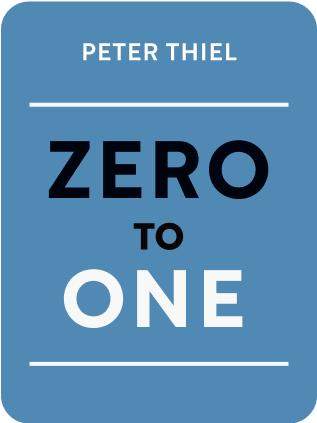

This article is an excerpt from the Shortform summary of "Zero To One" by Peter Thiel. Shortform has the world's best summaries of books you should be reading.
Like this article? Sign up for a free trial here .
What was the dot-com bubble? What can it teach us about tech startups?
The dot-com bubble of the 1990s was the biggest bubble since the one ending in the Wall Street crash of 1929. The “lessons” of the dot-com dictate the way we think about tech today.
Continue reading for Thiel’s insights on the dot-com bubble and its lessons for entrepreneurs.
Lessons of the Dot-Com Bubble
Peter Thiel’s “contrarian question” is this: What significant truth have you discovered that nobody else believes? Thiel affirms that you can sometimes answer this question by working backward. First, ask what is the conventional wisdom that everyone believes. Then consider what the opposite of that would be. According to Thiel, the opposite of conventional wisdom is more likely to be true than the conventional wisdom. That said, he also emphasizes the importance of thinking for yourself rather than blindly following or opposing the crowd.
As a case study in the dangers of following conventional wisdom, Thiel recounts the dot-com bubble of the 1990s. Prior to that time, most people understood that businesses need to make money, but for a few years, it became fashionable to believe that publicity and traffic were more important than profits. Companies sustained large losses under the delusion that they were investing in their future success. The bubble broke circa 2000, when investors realized that this cycle of unending losses was untenable, and the lessons learned from the crash became part of conventional business wisdom.
But did we learn the right lessons from the dot-com bubble? Thiel argues that we didn’t. To understand the real lessons of the tech bubble for startups today, first we need to review the 1990s. Then we’ll analyze the bubble in more detail, and finally we’ll consider Thiel’s conclusions about the lessons from it that became part of conventional wisdom.
Historical Overview of the 1990s
We remember the 1990s mostly positively for the rise of the internet, but the 18-month dot-com bubble at the end occurred against a backdrop of growing financial problems in the US and globally.
The US economy had been in recession in the late 1980s, and economic recovery was sluggish in the early 1990s. At the same time, Americans had rising concerns about globalization, because American companies were outsourcing jobs to countries with lower labor costs and Japan was out-competing the US in the global semiconductor market.
And the US wasn’t the only country facing financial challenges in the 1990s. For example, in 1997, the economies of Thailand, Indonesia, and South Korea crashed due to massive debt and government corruption. And in 1998, Russia, also facing insurmountable debt, defaulted on its loans by devaluing its currency. The European economy was also struggling through its transition to universal currency. These crises contributed to a bleak global financial outlook.
The rise of e-commerce was the only bright spot against this background of dim financial prospects. Many people saw their economic problems as evidence that traditional economic institutions couldn’t deal with the increasingly globalized economy and concluded that the internet would provide the foundation for the global economy of the future.
This bright spot arguably first appeared in 1993 when a precursor of Netscape Navigator—Mosaic—first made the internet accessible to ordinary people. Internet usage subsequently grew exponentially, fueling the rise of Netscape, Yahoo, Amazon, and other internet companies. Investors flocked to internet-based companies, despite Federal Reserve chairman Alan Greenspan’s insightful warning in 1996 that these companies were being overvalued in the market.
History of the Dot-Com Bubble
Between September 1998 and March 2000, Silicon Valley was awash in money from investors, and entrepreneurs hastened to supply the insatiable demand for new internet companies to invest in. Lavish launch celebrations became the norm, as did a business model that encouraged growing your company by spending investors’ money, whether it was profitable or not. Thiel speculates that many entrepreneurs recognized that this situation was unsustainable but decided to enjoy it while it lasted.
PayPal’s Launch
This was the environment in which Thiel and his co-founders started PayPal. Their original vision was to create a kind of digital currency that could replace the dollar, but they started out by developing tools to send dollars electronically over the internet.
They experimented with a system that allowed people to send and receive money using PalmPilots, but there weren’t enough PalmPilot users for this to be tenable. Recognizing that email was becoming ubiquitous, PayPal pivoted to provide a way of sending money by email.
Like most companies of the time, PayPal prioritized rapid growth over up-front profits. At one point, they even offered people $10 to create a PayPal account and another $10 for convincing a friend to sign up. However, Thiel maintains that, in PayPal’s case, the cost of growth was justifiable because they needed millions of users to become profitable in the long term.

———End of Preview———
Like what you just read? Read the rest of the world's best summary of Peter Thiel's "Zero To One" at Shortform .
Here's what you'll find in our full Zero To One summary :
- Why some companies genuinely move the world forward when most don't
- How to build a company that becomes a monopoly (and why monopolies aren't bad)
- Silicon Valley secrets to selling products and building rockstar teams






